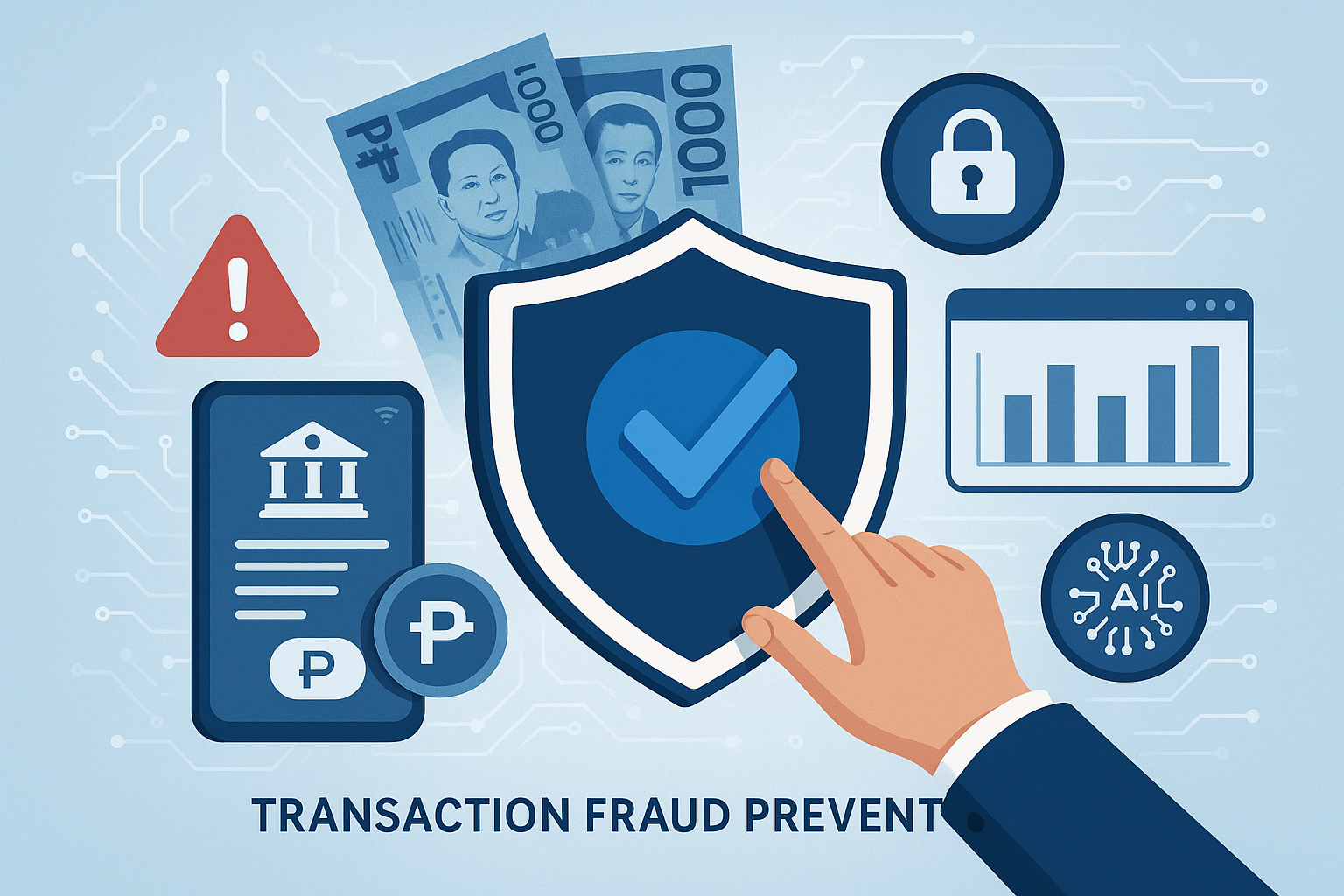Top Strategies for Banking Fraud Prevention
.svg)
Banking fraud is escalating at an alarming rate. In 2024, over 50% of banks, fintechs, and credit unions reported an increase in business fraud, according to reports. More than 35% experienced over 1,000 fraud attempts in the past year. Alarmingly, 1 in 10 institutions faced over 10,000 attempts, says Alloy.
Consumers reported losses exceeding $10 billion due to fraud. Additionally, 25% of financial organizations indicated losses of at least $1 million due to fraudulent activities. The rise in suspicious activity reports is concerning, with 39% of SARs linked to fraudulent activities.
This blog will explore effective strategies for banking fraud prevention. We will cover risk management techniques, AI-powered solutions, and the importance of real-time transaction monitoring.
The Rising Tide of Banking Fraud: Understanding the Threat
Banking fraud has evolved significantly over the past decade. As technology advances, so do the tactics employed by fraudsters. They have become more sophisticated, leveraging the same digital tools meant to secure transactions.
The banking industry faces numerous fraud challenges daily. These range from traditional schemes, like check fraud, to more complex online attacks. Social engineering, where scammers manipulate individuals to reveal confidential information, is a growing threat. It's often overlooked but can have devastating consequences.
Fraudsters also exploit vulnerabilities in financial systems. Account takeover is one such method, where a criminal gains access to a victim's account. The impact of such breaches extends beyond financial loss, affecting customer trust and brand reputation.
Another emerging threat is synthetic identity fraud. This involves creating fake identities by combining real and fabricated information. Such fraud can go undetected for years, causing substantial cumulative damage.
Given these threats, it's imperative for institutions to remain vigilant. Understanding these evolving fraud tactics is the first step in developing robust fraud detection and prevention strategies. Without such measures, financial institutions risk exposure to considerable financial loss and reputational damage. Therefore, an informed approach is essential for effective banking fraud prevention.

The Role of Risk Management in Fraud Prevention
Risk management is pivotal in safeguarding financial institutions. It serves as a proactive shield against potential fraudulent activities. By identifying potential threats, institutions can develop tailored strategies to mitigate risks before they manifest.
A comprehensive risk management framework assesses vulnerabilities across all channels. This includes evaluating both digital and physical infrastructures. Early detection of weak points allows banks to implement necessary defenses and adjustments swiftly.
Furthermore, an effective risk management strategy involves constant monitoring and evaluation. It ensures the adaptive reshaping of controls to match evolving fraud tactics. This dynamic approach is crucial to staying ahead of fraudsters' inventive methods.
Finally, collaboration between different departments within an institution enhances risk management efficacy. Sharing insights and knowledge empowers teams to respond cohesively to fraudulent threats. In this way, a unified approach significantly fortifies a bank's defenses, reducing exposure to potential fraud and associated losses.
AI-Powered Fraud Detection: The New Frontier
Artificial intelligence (AI) is transforming fraud detection in the banking industry. It offers sophisticated techniques to uncover potential fraudulent activities. AI algorithms analyze vast datasets, identifying patterns that would escape human notice.
AI-powered tools bring enhanced precision to fraud prevention efforts. They improve the accuracy of identifying suspicious transactions. This reduces reliance on manual inspections, thereby saving time and resources.
One major advantage is the speed at which AI operates. It can assess transactions in real time, ensuring prompt action against evolving fraud schemes. Immediate responses minimize financial losses and protect customer trust.
Furthermore, AI is instrumental in minimizing false positives. By learning from historical fraud patterns, AI improves over time, distinguishing between genuine transactions and real threats. This accuracy enhances customer experiences by avoiding unnecessary transaction disruptions.
Incorporating AI into fraud detection systems is no longer optional. It has become a necessity for financial institutions aiming to secure their operations. As fraudsters become more sophisticated, AI remains a key component in staying a step ahead in fraud detection and prevention strategies.
Real-Time Transaction Monitoring
Real-time transaction monitoring is crucial in preventing fraud. It allows banks to identify anomalies as they happen. Immediate alerts enable swift action to stop fraudulent activities before they escalate.
This proactive approach is essential in today's fast-paced banking environment. Automated systems track vast volumes of transactions continuously. This ensures that suspicious transactions are flagged instantaneously.
Real-time monitoring also supports compliance with regulatory standards. These requirements often mandate the identification of suspicious transactions without delay. By integrating real-time capabilities, banks align with these legal expectations while protecting their assets.
Predictive Analytics and Machine Learning
Predictive analytics forecasts potential fraud by analyzing current trends. This method anticipates possible threats before they occur. Such foresight is indispensable for proactive fraud prevention.
Machine learning enhances this by continually learning from data. It evolves and refines its predictive models, adapting to new fraud tactics. This adaptability is vital in responding to changing fraud landscapes.
Integrating predictive analytics and machine learning equips banks with robust defenses. These advanced technologies not only detect but also predict potential fraud. This ensures that banks remain vigilant and prepared in their risk management practices.
{{cta-first}}
Combating Account Takeover and Social Engineering
Account takeovers have surged as fraudsters exploit stolen credentials. They use advanced techniques to bypass security controls and gain unauthorized access. This type of fraud presents a significant threat to both banks and customers.
Social engineering remains a powerful tactic in a fraudster's arsenal. Criminals manipulate victims into revealing sensitive information unwittingly. These attacks can be complex, often involving personalized schemes tailored to deceive specific individuals.
Preventing account takeovers requires robust security measures. Financial institutions must implement layered defenses to protect user accounts. This includes securing all access points and monitoring for unusual activities.
The human element in fraud should not be underestimated. Employees and customers need continuous education on the latest tactics used in social engineering. Awareness and training programs are vital to ensure everyone recognizes potential threats and knows how to respond appropriately.
Multi-Factor Authentication and Behavioral Analytics
Multi-factor authentication (MFA) adds an extra layer of security. It requires users to verify their identity through multiple methods. This minimizes unauthorized access even if credentials are compromised.
Behavioral analytics examines user patterns to detect anomalies. It identifies unusual behaviors that might indicate an account takeover. These could include unexpected login locations or transaction types.
Implementing MFA with behavioral analytics enhances security significantly. Together, they form a powerful defense against account takeovers, effectively preventing unauthorized access. By focusing on both the digital and behavioral aspects, banks can safeguard their systems more effectively.
Customer Education: A Critical Defense Strategy
Educated customers are often the first line of defense against fraud. Awareness of fraud tactics enables them to recognize and avoid risky situations. This knowledge is crucial in preventing social engineering attacks.
Banks should prioritize customer education as part of their security strategy. Regular updates and advice help clients stay informed about evolving threats. This empowers them to take precautionary measures against potential fraud.
Effective communication channels are vital for educational efforts. Banks can use emails, mobile alerts, and online resources to reach their customers. By fostering a sense of vigilance, financial institutions enhance their collective resilience against fraud.
Addressing the Challenge of Synthetic Identity and Identity Theft
Synthetic identity fraud is a growing menace in the banking industry. Fraudsters combine real and fake information to create fictitious identities. These identities are then used to open accounts and conduct fraudulent transactions.
This type of fraud is difficult to detect, as it often flies under the radar of traditional verification processes. The financial losses from synthetic identity cases can be substantial. Moreover, they also have long-lasting impacts on credit systems and customer trust.
Identity theft, on the other hand, involves stealing genuine personal information. It poses a critical threat as it enables attackers to impersonate real customers. Victims can suffer financially and struggle to restore their personal reputations.
Effective solutions require comprehensive identity verification methods. These efforts must address the complexities of both synthetic identity and identity theft. By enhancing their verification processes, banks can better detect and mitigate these increasingly sophisticated threats.
Digital Identity Verification and Biometric Authentication
Digital identity verification plays a crucial role in fraud prevention. It involves using technology to confirm the validity of a person's identity electronically. This helps to quickly and accurately detect fraudulent activities early on.
Biometric authentication is emerging as a highly effective security measure. Techniques such as fingerprint scanning, facial recognition, and voice identification add layers of security. These methods provide a robust defense by leveraging unique biological traits that are difficult to replicate.
Together, digital verification and biometric authentication create formidable barriers against fraud. This combination offers an enhanced level of security and convenience for both banks and customers. As technology advances, these measures will continue to play a pivotal role in safeguarding identities against fraud.
Reducing False Positives: Balancing Security with Customer Experience
Reducing false positives is a significant challenge in fraud detection. While identifying fraudulent activities is crucial, mistakenly flagging legitimate transactions frustrates customers. Balancing security with user satisfaction is essential for maintaining trust.
Advances in AI-powered fraud detection software help minimize false alerts. These systems learn from past data and adapt to normal customer behaviors. As a result, they improve accuracy in identifying genuinely suspicious transactions.
Banks must fine-tune their fraud prevention solutions to achieve the right balance. This involves continuously refining algorithms and incorporating customer feedback. Collaboration between technology providers and banks enhances the effectiveness of these systems.
Maintaining a seamless customer experience is crucial while preventing fraud. Customers should feel secure without encountering constant verification hurdles. By reducing unnecessary interruptions, banks can enhance customer loyalty and trust.
The Importance of Data Privacy in Fraud Prevention
Data privacy is at the heart of modern fraud prevention strategies. Protecting customer information builds trust and ensures compliance with regulations. Effective fraud prevention measures must balance robust security with data privacy.
Encryption technologies safeguard sensitive information from unauthorized access. By securing data at each transaction stage, banks protect both themselves and their customers. Secure APIs and communication channels reinforce these security measures.
Customer awareness of privacy practices can improve trust in fraud prevention efforts. Transparency with customers regarding data use and security measures is essential. This communication reassures customers that their information is handled responsibly.
{{cta-ebook}}
The Future of Banking Fraud Prevention: Trends and Innovations
The future of banking fraud prevention lies in leveraging advanced technologies and innovative strategies. As cyber threats evolve, banks must adapt to stay ahead. Innovations in artificial intelligence (AI) and machine learning are at the forefront, analyzing vast datasets to detect potential fraud patterns with heightened precision.
One key trend is the integration of behavioral biometrics. This approach analyzes user behavior, such as typing speed and navigation habits, to identify anomalies. Unlike traditional methods, behavioral biometrics provides an added layer of security, offering a seamless experience for users.
Additionally, the shift towards digital-only banking increases the demand for robust fraud prevention measures. Fintech companies are leading the charge, providing cutting-edge solutions that enhance the overall security posture of financial institutions.
Continuous innovation and adaptation to new technologies remain essential. As fraud tactics become more sophisticated, banks and fintech partners must foster a culture of innovation to protect their assets and customers.
Blockchain Technology and Secure APIs
Blockchain technology is revolutionizing transaction security with its inherent transparency and immutability. By creating an incorruptible digital ledger, it minimizes the risk of fraud. The decentralized nature of blockchain ensures that transactions are secure from tampering.
Secure APIs play a crucial role in enabling safe interactions between different banking platforms. They facilitate secure data exchange while maintaining strict access controls. This ensures that only authorized entities can access sensitive information.
The combination of blockchain and secure APIs enhances trust in digital transactions. By integrating these technologies, banks can offer their customers improved security and peace of mind. As a result, blockchain technology and APIs are essential components in the future of banking fraud prevention.
The Role of Global Collaboration and Information Sharing
Global collaboration is vital in combating the ever-evolving threat of banking fraud. When banks and financial institutions share information, they strengthen their collective defenses. Cooperation across borders allows for quicker responses to emerging threats and reduces vulnerabilities.
Information sharing between banks leads to better understanding of fraud patterns. By analyzing shared data, institutions can develop more effective fraud detection systems. These insights support the continuous improvement of fraud prevention strategies.
Moreover, collaboration with international regulatory bodies ensures compliance with global standards. This fosters a more secure banking environment worldwide. By embracing global cooperation, financial institutions can better protect their customers and maintain a robust defense against fraud.
Conclusion: Staying Ahead of Evolving Fraud
In today’s fast-paced digital landscape, preventing fraud is not just a necessity but a vital component in building and maintaining consumer trust. With Tookitaki's FinCense, financial institutions can protect customers from over 50 fraud scenarios, including account takeovers and money mule schemes, all backed by our AFC Ecosystem. Our powerful AI and machine learning solutions enable real-time fraud prevention tailored to your institution’s specific needs, allowing for the accurate detection and prevention of fraudulent activities as they happen.
By monitoring suspicious activity across billions of transactions, Tookitaki ensures the safety and security of your customers, empowering them to transact with confidence. Our comprehensive, real-time fraud prevention system is specifically designed for banks and fintech organizations seeking to fortify their defenses.
Take advantage of our advanced AI capabilities to screen customers and prevent transaction fraud in real-time, achieving an impressive 90% accuracy rate for robust, reliable protection. With thorough risk coverage, our sophisticated algorithms encompass all potential fraud scenarios, offering peace of mind and security.
Moreover, our seamless integration capability allows Tookitaki's FinCense to work alongside your existing systems effortlessly, streamlining operations while enabling your compliance team to focus on significant threats. Protect your financial institution and enhance consumer trust with Tookitaki's cutting-edge fraud prevention solutions. Stay ahead of evolving fraud tactics with FinCense—your partner in safeguarding financial integrity.
Experience the most intelligent AML and fraud prevention platform
Experience the most intelligent AML and fraud prevention platform
Experience the most intelligent AML and fraud prevention platform
Top AML Scenarios in ASEAN

The Role of AML Software in Compliance

The Role of AML Software in Compliance










